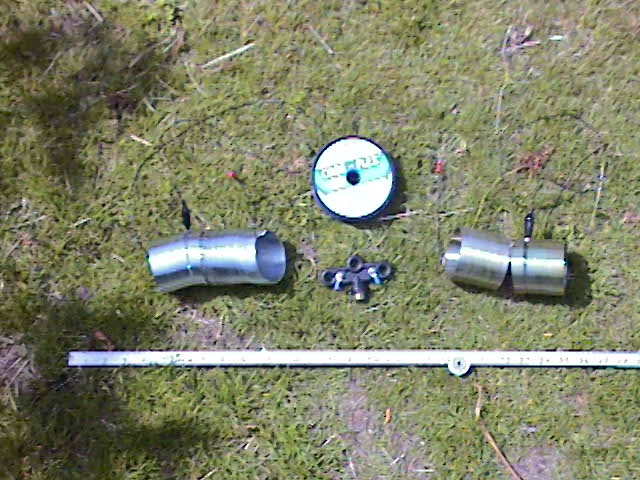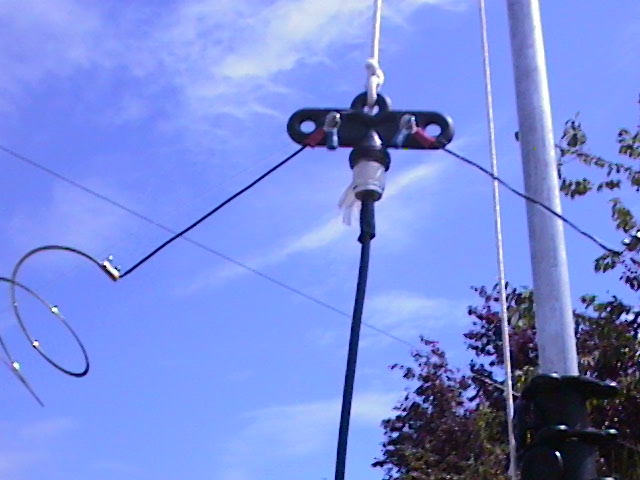

Antentop is FREE e-magazine devoted to Antennas and Amateur Radio an
Special page devoted to
A Slinky Antenna

Custom Search
|
ANTENTOP-
01- 2020, # 024 |
A
Slinky Antenna
|
|
|
A Slinky
Antenna |
||
|
|
By: Greg Mossop, G0DUB |
|
|
|
|
|
|
I
built a Slinky antenna using four of the children’s toys. The
aim is to have a helically loaded dipole which you tune to resonance
by shorting out turns at the end of the coils. Depending upon
the quality of the Slinkys you buy this isn't really an outdoor
antenna since corrosion can set in quite quickly.
A little out of focus but here are the raw materials. The two slinky's per leg have been joined together using the metal
insert from a chocolate block connector. Once they were restrained
in this way I filled up the connector with solder. The same approach
was used for the wire terminations at the ends of the springs.
The reel at top centre of the picture contains 40lb breaking strain
fishing line used as a support for the antenna. ----------------------------------------------------------------------- A useful idea but probably more likely to be an
indoor standby antenna for me. I was wondering about abandoning
the co-ax feed and jumper wires and feeding it with balanced line
as a doublet. It would certainly be easier than tweaking crocodile
clips each time I changed band. 73!
G0DUB |
Greg
Mossop, G0DUB
I used a normal co-ax dipole centre. You can see that to make life easier
I put wire extensions on the springs which give a little more
flexibility to the joint. There are a number of variations on
how to feed a slinky. Some use one long continuous spring and
have inductive coupling from the feeder instead. |
|
|
Page- 38 |
||
38 39
 |
 |
|
 |
|
|
|||
Just for Fun:

Powered byIP2Location.com
Thanks for your time!
Last Updated:
January 30, 2021 18:33








